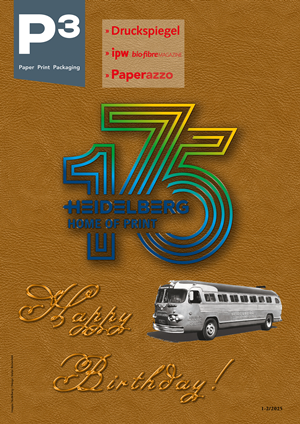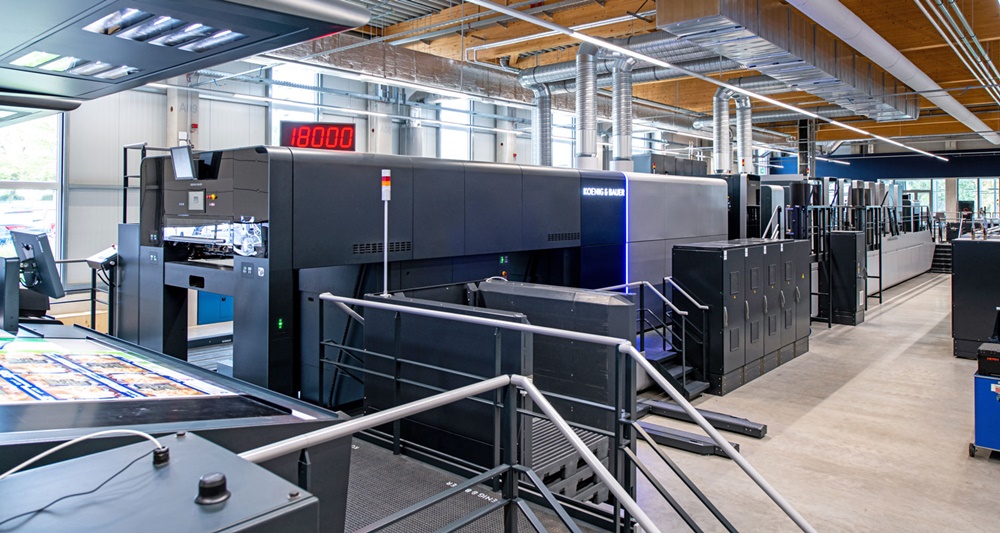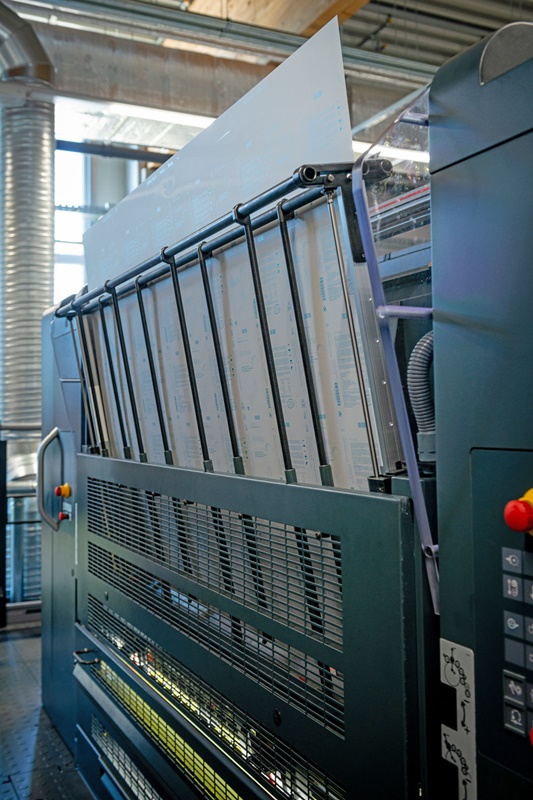P3 7-8/2021 en
Koenig & Bauer
New Generation of Large-Format Sheetfed Offset Presses
Large Format Printing
What was originally planned as an international event can only be presented to smaller groups of interested users for the time being – when carrying out print tests or live video demonstrations: Koenig & Bauer is proud to announce the market launch of a brand new generation of its Rapida 145 and Rapida 164 large-format sheetfed offset presses. The new press generation is available with immediate effect.
The new Rapida 145 now boasts the same new design as all the latest presses from Koenig & Bauer.
The fact that both large-format series now boast the same new innovative design as all the latest Koenig & Bauer presses immediately catches the eye. Along with this, there are also many other new features that will enable the large-format Rapidas to consolidate their position in this format class. They handle sheet formats up to 1,060 x 1,450 mm (Rapida 145) and 1,205 x 1,640 mm (Rapida 164) at a standard maximum production speed of 16,000 sheets/hr in board production. Incorporation of a high-speed package raises the top speeds another notch, allowing them to handle 18,000 sheets/hr (Rapida 145) and 17,000 sheets/hr (Rapida 164). Alongside new upgrades to the automation features, they offer the performance parameters of the latest medium-format presses – for twice the print format or even more.
The operating concept has also been given a makeover. Large touch panels on the feeder, on the first printing unit and at the delivery render many buttons and other operating elements superfluous. All routine processes that are normally activated decentrally from the console can therefore be controlled just as conveniently on the press itself. A prominent status indicator at the delivery provides instant updates on the current press status. Different colours are used to signal whether the press is in production, standby or maintenance mode.
Digital control and monitoring
The ErgoTronic console features a touchscreen monitor and a large wallscreen. All relevant information is presented in a clearly structured fashion on both displays. A host of additional functions allow production to be monitored in real time. Production data and other information, such as CO2 emissions, are available at a glance. Autonomous printing of a job list, app-based control of many press functions, access to the CustomerCommunity as a central point of contact between users and the manufacturer, and, of course, a function to start individual press programs using presets based on the data supplied or previously saved – the console is the digital hub for all production processes in the printshop.
This applies to quality assurance in equal measure. Three different systems combine inline colour control (with the option of grey balance control) with functions for production monitoring (QualiTronic PrintCheck), comparison with the pre-press PDF (QualiTronic PDFCheck) and content inspection (QualiTronic PDF HighRes).
Additional benefits for packaging specialists
The new Rapida large format generation brings significant improvements for the core application area of packaging printing in particular. Substrate versatility was already very broad in the past, allowing board thicknesses of up to 1.2 or 1.6 mm. Universal gripper systems make this possible. On the new presses, the range of substrates handled can be increased further still – even beyond the 2 mm mark – by simply converting the printing units. For companies that work with heavy board grades or offer post-printing on corrugated board involving printing and finishing a full spectrum in an inline process, the new capabilities represent a quantum leap forward.
Other important changes concern the options to allow increased pile heights. Five variants are available, covering the range from 185 to – as a new option – 925 mm. Raising piles by 185, 370 or 555 mm can also be achieved by placing the press on cast blocks. The additional outlay for special press foundations can then be saved.
Significant improvements in many details
Many less visible but nonetheless important details have also been overhauled. These include the sheet guiding elements in the delivery and delivery extension (dryer section). Modifications like this have been paramount in realising top production speeds of up to 18,000 sheets/hr with an even broader range of substrates and finishing applications. Thanks to a dynamic sheet brake, visibility and accessibility at the delivery remain unhindered. There is no need for complicated sheet braking systems or delivery grippers.
Long-life gripper shafts with automatic lubrication and a reduced number of manual lubrication points help simplify maintenance. The same applies to the new AC drive motor of the large-format Rapidas. It is not only practically maintenance-free, but also reduces energy consumption.
High production capacity and flexibility
All the existing automation and high performance features of the previous models are, of course, still available for the new Rapida generation. This begins with the sheer endless choice of press configurations, with up to 16 printing and finishing units, together with options such as a reel-to-sheet feeder, automatically convertible perfecting, coating and drying units, a double-pile delivery, and extends to a range of non-stop pile changing and logistics components. This means that individual press configurations can be tailored specifically to the very specific requirements of packaging and commercial printers.
When it comes to automation, the new Rapida generation sets a new benchmark in large-format printing. The sidelay-free infeed DriveTronic SIS, simultaneous plate changing with DriveTronic SPC, the disengaging of unused inking units as a standard feature, CleanTronic cloth-based washing systems for parallel washing processes, fast coating forme changes with DriveTronic SFC and anilox roller changing with AniSleeve are just a few of the automation components that enable many processes to run concurrently at job changeover and thereby contribute to the shortest ever makeready times. The dryer modules, too, are manufactured by Koenig & Bauer. After all, dryer systems are one of the company’s core competencies.
All system components and automation functions serve one goal, namely to provide users with the best possible support, and to enable them to produce efficiently and successfully, whether in packaging or the commercial segment. The large-format Rapidas are therefore the ideal means of production, and ensure print companies are equipped for all current and future challenges.
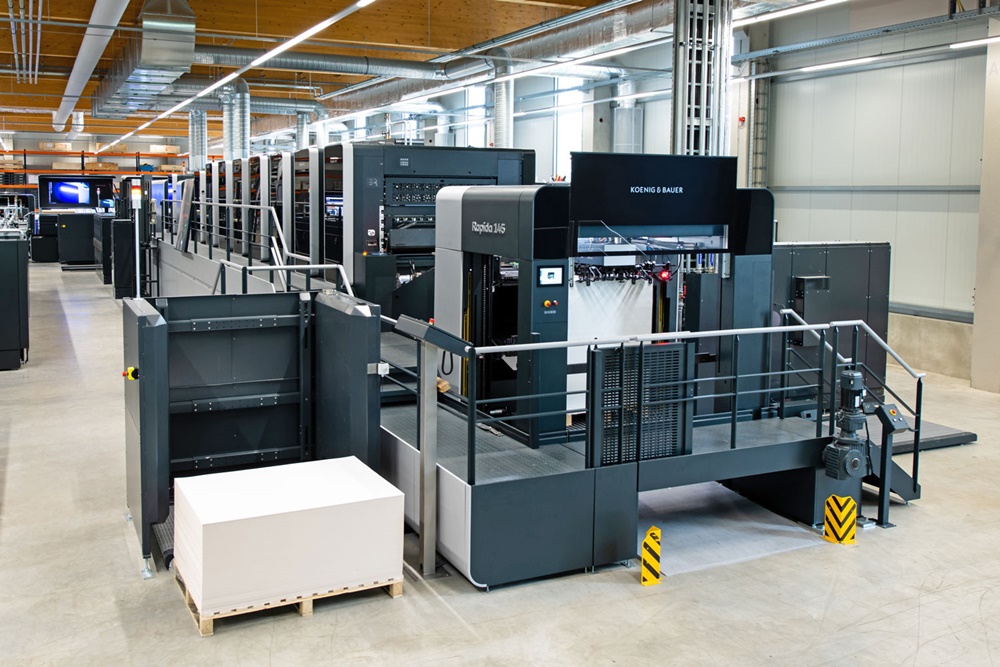
Endless configuration options: this Rapida 145 in the CEC at Koenig & Bauer Sheetfed stands on 555 mm cast blocks and features seven printing units, two coaters, intermediate drying units, a three-section extended delivery with twin-pile capabilities, and fully automatic pile logistics.
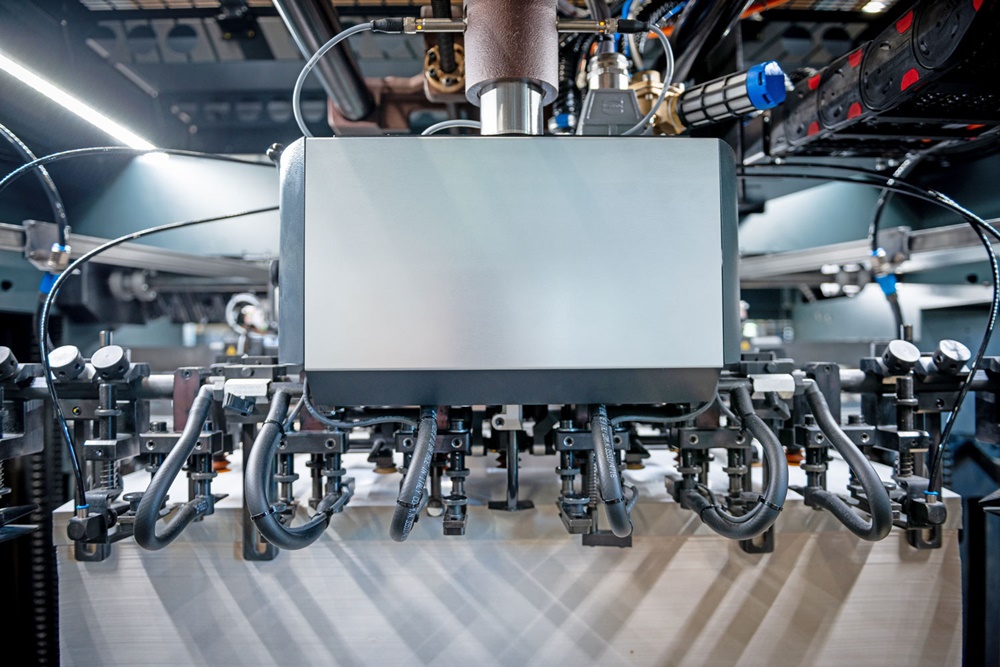
As is immediately evident here on the feeder head, there are now only very few manual operating elements anywhere on the press. Practically all processes can be controlled by means of touch panels or the main console.
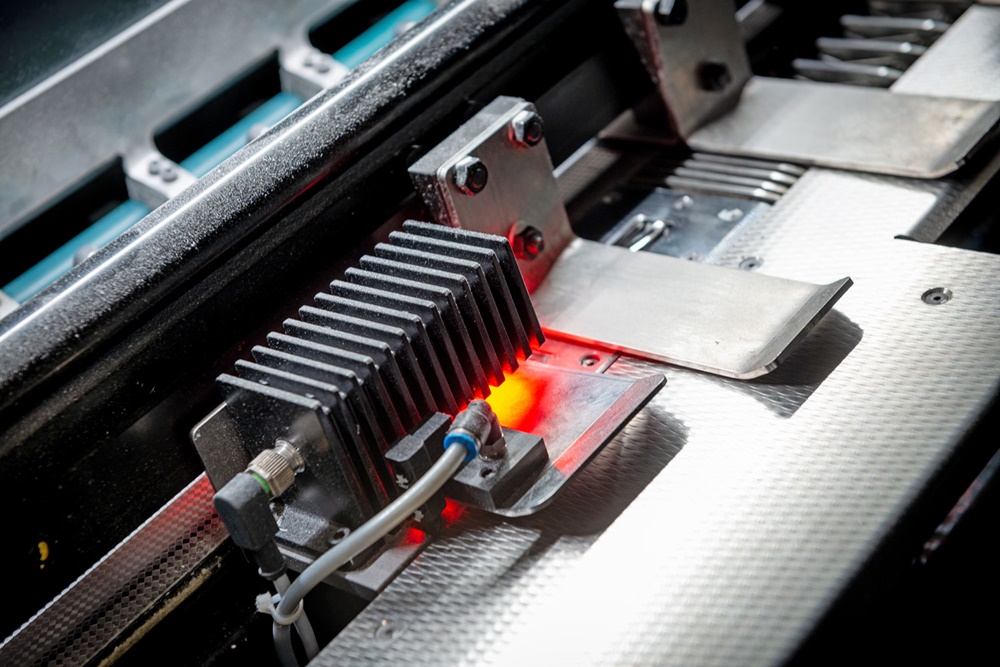
Most Rapida presses for large-format sheetfed offset are equipped with the sidelay-free infeed system DriveTronic SIS.
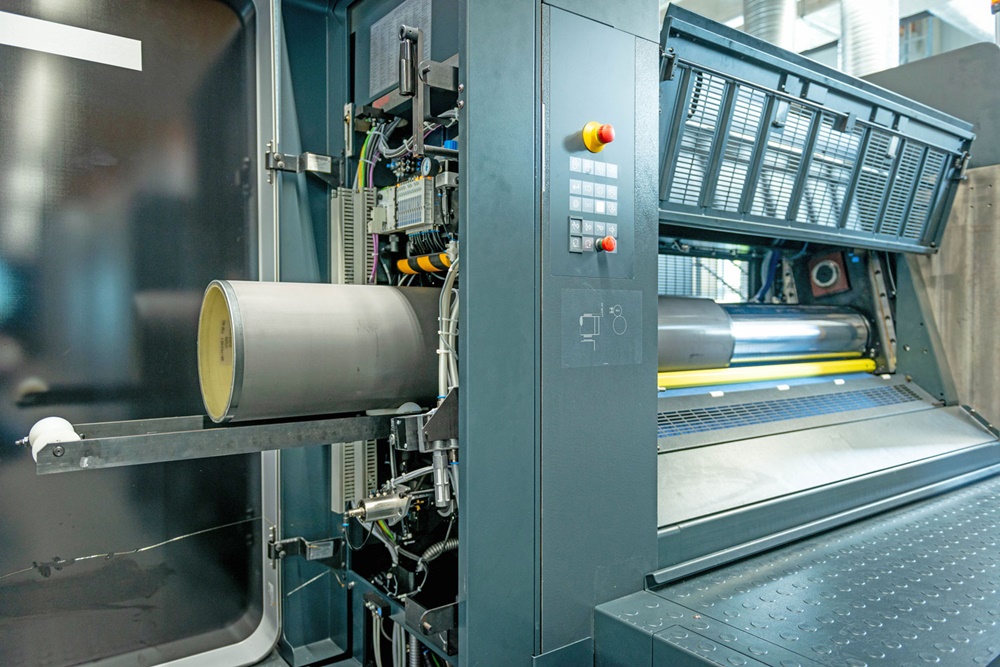
Anilox roller changes can be realised quickly by a single person without the need for tools – thanks to the AniSleeve technology.
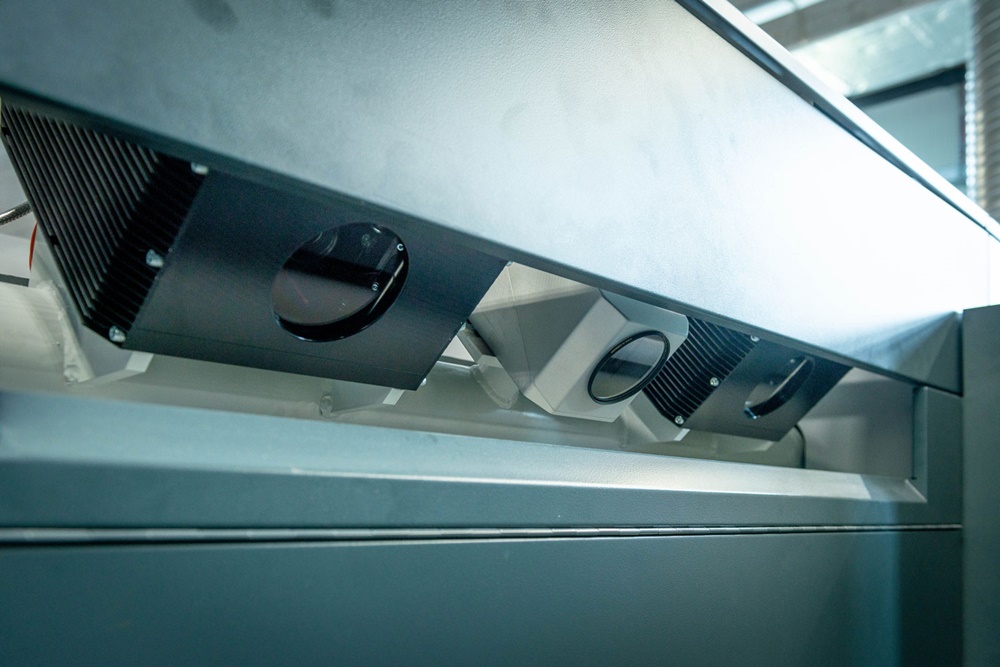
Cameras for inline colour control (centre) and sheet inspection at resolutions of up to 260 dpi check every single sheet during production. Errors and defects are visualised on the wallscreen, and reports are produced to verify the quality.
Editor: sbr
Images: Koenig & Bauer

